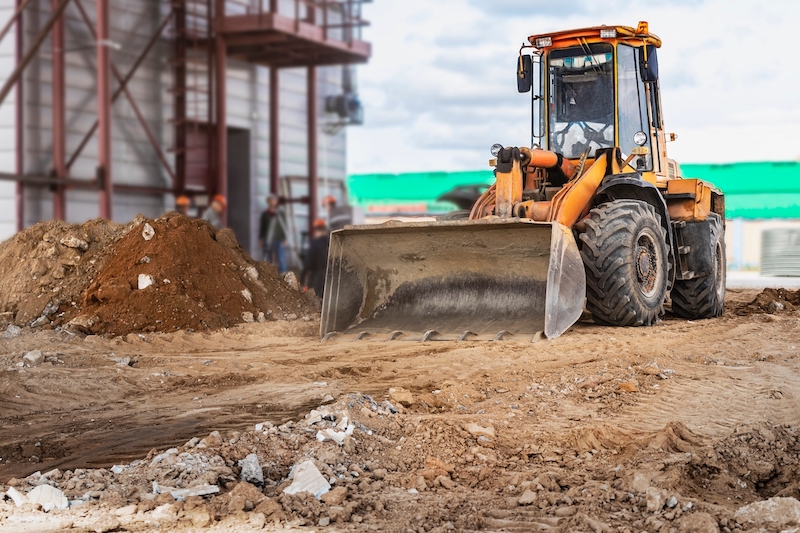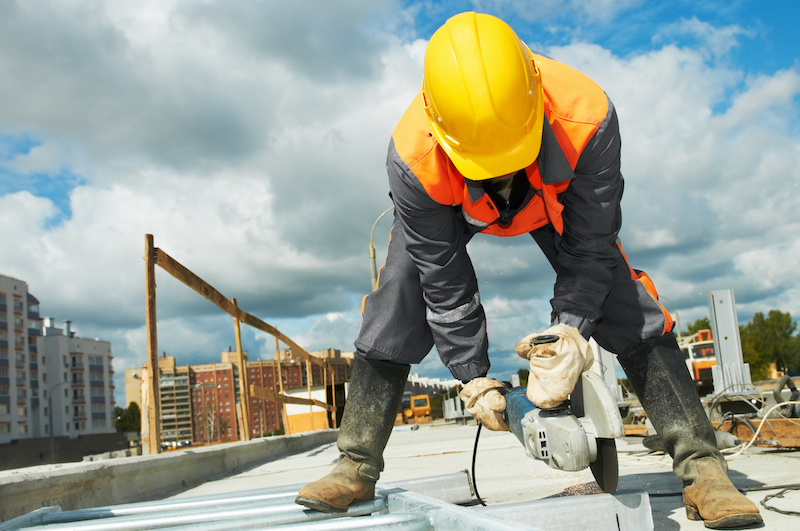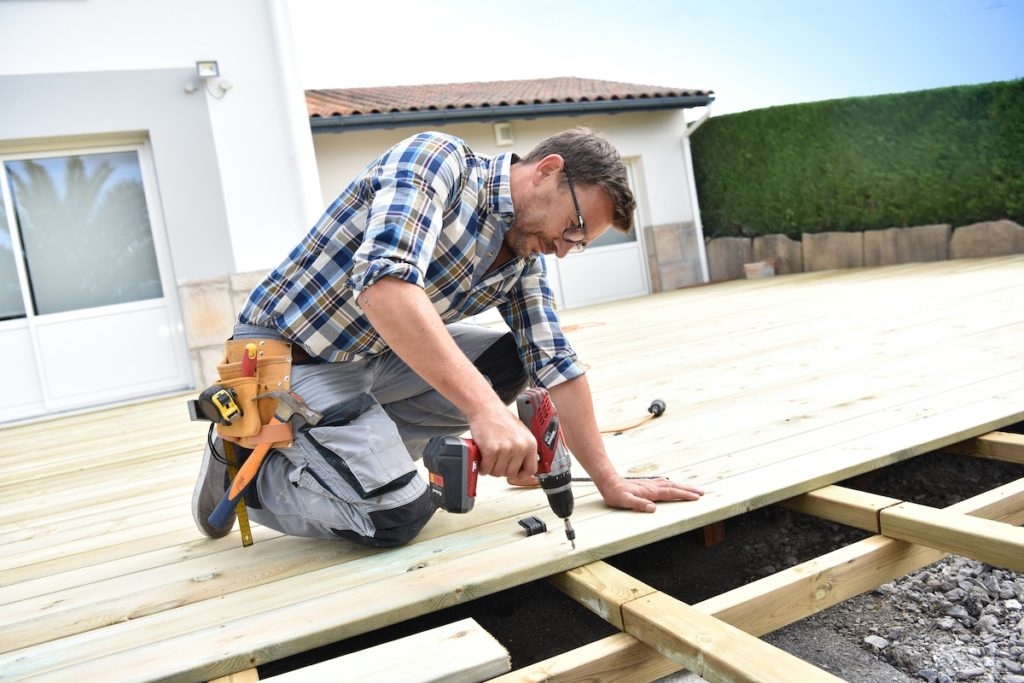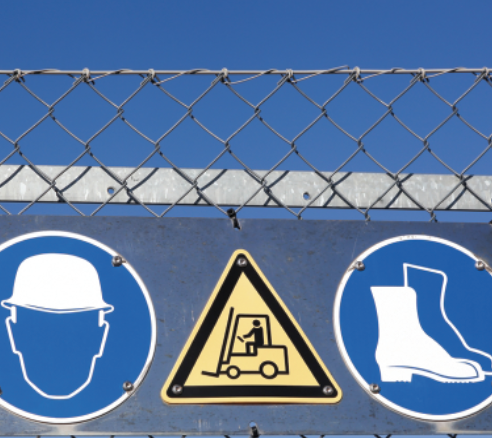CASE #261

CASE #261 – Forklift operator killed by front-end loader
A 54-year-old labourer/forklift operator died after being struck by a front-end wheel loader and pinned against the dumpster he was unloading at a waste recycling facility.
The victim, who worked for a metals processing facility directly adjacent to the recycling establishment, was using a forklift to transport a dumpster full of debris to the recycling plant. He pulled up next to the pile, got off the forklift, and began to prepare the dumpster to be emptied.
A large, front-end wheel loader was also in the facility and was picking up and moving trash. The loader was backing into the area to get into position to pick up another load when it struck the victim, pinning him against the dumpster (which was still on the forks). The victim suffered blunt force injuries and died three days later.
There was no communication between the two victims, no personal protective equipment was worn by the victim and the loader did not have a back-up alarm.
- A safety and health plan based on a job hazard analysis should be developed by the employer and followed where workers are assigned tasks.
- Communication with any operator of heavy equipment is critical to a safe work environment.
- All front-end wheel loaders should be equipped with an audio back-up alarm and reverse warning lights.
- Personal protective equipment such as high-visibility vests should always be worn when working near front-end wheel loaders.
Un ouvrier/opérateur de chariot élévateur de 54 ans est décédé après avoir été heurté par une chargeuse sur pneus frontale et coincé contre la benne qu’il déchargeait dans une installation de recyclage des déchets.
La victime, qui travaillait pour une usine de traitement des métaux directement adjacente à l’établissement de recyclage, utilisait un chariot élévateur pour transporter une benne pleine de débris à l’usine de recyclage. Il s’est arrêté à côté du tas, est descendu du chariot élévateur et a commencé à préparer la benne à ordures à vider.
Une grosse chargeuse sur pneus frontale se trouvait également dans l’installation et ramassait et déplaçait des déchets. La chargeuse reculait dans la zone pour se mettre en position pour ramasser une autre charge lorsqu’elle a heurté la victime, la plaquant contre la benne à ordures (qui était encore sur les fourches). La victime a subi des blessures contondantes et est décédée trois jours plus tard.
Il n’y avait aucune communication entre les deux victimes, aucun équipement de protection individuelle n’était porté par la victime et le chargeur n’avait pas d’alarme de recul.
- Un plan de sécurité et de santé basé sur une analyse des risques professionnels doit être élaboré par l’employeur et suivi là où les tâches sont assignées aux travailleurs.
La communication avec tout opérateur d’équipement lourd est essentielle pour un environnement de travail sécuritaire. - Toutes les chargeuses sur pneus frontales doivent être équipé d’une alarme sonore de recul et de feux de marche arrière.
- Des équipements de protection individuelle tels que des gilets haute visibilité doivent toujours être portés lors de travaux à proximité de chargeuses sur pneus frontales.
CASE #260

CASE #260 – Falling hook block just misses worker
The wire rope holding the hook block of an overhead travelling crane broke, causing the hook block to fall 6 metres (20) feet to the ground, landing less than an arm’s length away from the worker operating the crane.
The wire rope broke because the hook block had been pulled up beyond the upper limit switch, bringing it tight to the drum. The torque of the drum motor was powerful enough to snap the wire rope.
Subsequent examination discovered bent parts in the trip lever mechanism, and because of this the trip lever failed to activate the upper limit switch. Regular routine inspections did not detect the faulty trip lever mechanism.
- All workers must be trained to recognize and avoid the hazards associated with their work.
- Employers must ensure that cranes are maintained properly and inspected regularly.
- Crane operators should verify that the safety devices are working prior to each use.
- An upper limit switch must be set so it will open the circuit to the hoist motor before the hook block reaches its upper limit as specified by the manufacturer.
Le câble métallique retenant le moufle à crochet d’un pont roulant s’est rompu, ce qui a fait tomber le moufle à crochet de 6 mètres (20) pieds au sol, atterrissant à moins d’une longueur de bras du travailleur qui conduisait la grue.
Le câble métallique s’est rompu parce que le moufle à crochet avait été tiré au-delà de l’interrupteur de fin de course supérieur, le rapprochant ainsi du tambour. Le couple du tambour moteur était suffisamment puissant pour casser le câble métallique.
Un examen ultérieur a permis de découvrir des pièces tordues dans le mécanisme du levier de déclenchement et, de ce fait, le levier de déclenchement n’a pas réussi à activer l’interrupteur de fin de course supérieur. Les inspections de routine régulières n’ont pas permis de détecter le mécanisme défectueux du levier de déclenchement.
- Tous les travailleurs doivent être formés pour reconnaître et éviter les dangers associés à leur travail.
- Les employeurs doivent s’assurer que les grues sont entretenues correctement et inspectées régulièrement.
- Les grutiers doivent vérifier que les dispositifs de sécurité fonctionnent avant chaque utilisation.
- Un interrupteur de fin de course supérieur doit être réglé de sorte qu’il ouvre le circuit du moteur du treuil avant que le moufle n’atteigne sa limite supérieure, tel que spécifié par le fabricant.
Weekly Safety Reminder – It Really Happened A weekly micro-learning email to keep safety top of mind.Every Monday morning, we send out a brief safety incident report, of one actual workplace accident, along with preventative measures that could have prevented the accident. Not all events will pertain to everyone’s industry, but the goal of keeping safety top of mind is global. This micro-learning email takes only 2-3 minutes to review and gives valuable insight into a real-life situation. And more importantly, reminds us all to stay vigilant when it comes to safety practices.
CASE #259

CASE #259 – Deck collapses, injuring delivery worker
A worker was using a crane truck to unload lumber onto a deck at a house under construction. As he was moving the last of the lumber, the deck collapsed. Debris struck and injured him.
The deck already had materials stacked on it. These materials weighed approximately 1,114 kilograms (2,445 pounds). The materials the worker placed on it from the crane truck added 5,741 kg (12,657 lbs. The deck was not capable of supporting that much weight, and so it collapsed.
This incident illustrates the need to take these preventive measures:
- Adequate planning. The wood-frame construction employer failed to consider lateral stability in the design of the temporary structure (the deck). The employer also failed to have the design for the deck reviewed or approved by an engineer. No calculations or other types of assessments were done to determine how much weight the deck could hold. The employer also did not ensure that access to the unfinished deck was restricted to prevent workers from overloading it prior to its completion.
- Hazard identification and safe work procedures. Lack of an engineered plan or equivalent design for the construction of a temporary structure (the deck) that could withstand the loads applied to it. This created a hazard to workers, as the deck’s load capacity was unknown. This hazard was not identified by the construction employer or communicated to the worker delivering the lumber. There were no written instructions or clear communications on where to place the materials, or any safe work procedures for the unloading task.
- Prime contractor should coordinate activities at worksite. The construction employer had no system in place for a multi-employer workplace. Information regarding the unfinished deck was not adequately communicated to employers and workers to prevent overloading it. This allowed conditions to develop that put the health and safety of workers at risk.
Un ouvrier utilisait un camion-grue pour décharger du bois sur la terrasse d’une maison en construction. Alors qu’il déplaçait le dernier morceau de bois, le pont s’est effondré. Des débris l’ont frappé et l’ont blessé.
Le pont avait déjà des matériaux empilés dessus. Ces matériaux pesaient environ 1 114 kilogrammes (2 445 livres). Les matériaux que le travailleur a placés dessus depuis le camion-grue ont ajouté 5 741 kg (12 657 lb). Le pont n’était pas capable de supporter autant de poids, et il s’est donc effondré.
- Planification adéquate. L’employeur de la construction à ossature de bois n’a pas tenu compte de la stabilité latérale dans la conception de la structure temporaire (le tablier). L’employeur a également omis de faire examiner ou approuver la conception du tablier par un ingénieur. Aucun calcul ou autre type d’évaluation n’a été effectué pour déterminer le poids que le pont pouvait supporter. L’employeur n’a pas non plus veillé à ce que l’accès au pont inachevé soit limité pour empêcher les travailleurs de le surcharger avant son achèvement.
- Identification des dangers et procédures de travail sécuritaires. Absence de plan d’ingénierie ou de conception équivalente pour la construction d’une structure temporaire (le tablier) pouvant supporter les charges qui lui sont appliquées. Cela a créé un danger pour les travailleurs, car la capacité de charge du pont était inconnue. Ce danger n’a pas été identifié par l’employeur de la construction ni communiqué au travailleur livrant le bois. Il n’y avait pas d’instructions écrites ou de communications claires sur l’endroit où placer les matériaux, ni sur les procédures de travail sécuritaires pour la tâche de déchargement.
- L’entrepreneur principal doit coordonner les activités sur le chantier. L’employeur de la construction n’avait pas de système en place pour un lieu de travail multi-employeurs. Les informations concernant le pont inachevé n’ont pas été communiquées de manière adéquate aux employeurs et aux travailleurs pour éviter de le surcharger. Cela a permis le développement de conditions mettant en danger la santé et la sécurité des travailleurs.
Tired of the crisis? You are not alone
Right now there are probably many of us thinking; “I am so over this COVID thing”. Trouble is, COVID-19 is not done with us, and chances are won’t be for a long time to come.
But the sun is still shining, the lawn still needs to be mowed and summer holidays are just around the corner, right? Isn’t it time we all just…go outside? Sadly, not yet. As you can imagine, there is a term for what many of us are feeling. It’s called “Quarantine Fatigue”.
Contributing psychologists at verywellmind.com explain that when COVID-19 first appeared, we were focused on staying safe and alive. And now that we’re in the next phase of feeling like there is no end in sight, the focus may seem unclear resulting in a feeling of tiredness and lethargy. Here are some reasons behind Quarantine Fatigue:
Our fear is receding.
At the beginning of this crisis, people launched themselves head-first into panic mode, making giant changes to their lives with the idea of staying alive. But now the immediate terror and urgency of the moment are beginning to recede. The actual numbers and the real science are no less concerning, but because we have done some accommodating psychologically to the fear we stop feeling it as intensely say psychologists. This leaves us with is a growing sense of non-productivity, repetitiveness, loss of many things of our old life plus the loss of excitement and newness in our day.
We miss human connection.
We also miss and crave contact with other people, especially since we are social creatures. While a few weeks of separation may have felt tolerable or even a welcome change, the social urges and needs are intensifying and we’re craving more human connection.
Crisis mode is hard to maintain.
As people’s awareness heightened about the virus, we went into crisis mode, developing a sense of urgency, anxiety, and quick decision making. But now the dust has settled and reality sets in. We are tired of it; quarantine fatigue.
We all experience quarantine fatigue differently, but one thing’s for sure, having healthy ways to cope is important for our physical, emotional, mental, and spiritual health. For example, you could practice new forms of caring for yourself such as mindfulness meditation, yoga or journaling.
Be kind to yourself. If you are feeling overwhelmed or experiencing severe mood swings, talk to your doctor for
help and advice.
The colors of workplace safety
Colors play an important role in helping to ensure workplace safety. Depending on the situation, each color is assigned a different meaning, which allows a person to determine very quickly what type of hazard is in the area.
There is no single set of rules for the use of safety colors in signs and labels. Standards have been developed by a variety of agencies, such as the International Organization for Standardization (ISO), the American National Standards Institute (ANSI), as well as the U.S. Occupational Safety and Health Administration (OSHA) and National Fire Protection Agency (NFPA).
In Canada, standards have been harmonized with those developed by these agencies, although there are variations.
The Canadian Standards Association (CSA) standard Z321contains three types of signs — symbol, symbol with text and text alone.
There are three main categories of signs — regulatory, warning and information. Each of these has two subcategories.
Regulatory signs indicate prohibition (such as no smoking) or mandatory requirements (such as the wearing of hard hats).
Warning signs indicate caution (such as slippery surfaces) or danger (such as an explosives storage area).
Information signs indicate emergency facilities (such as exit routes and first aid stations) or general information.
The CSA standard also contains graphic requirements for signs (shapes, images and text, as well as colors). The colors are:
Red — Prohibition and Danger.
Yellow — Caution.
Green — Location of emergency facilities.
Blue — General information.
Black — Prohibition, Mandatory Requirements and Caution.
Dark Grey — The background color for symbol signs with text.
In the United States, the comparable standard is ANSI Z535. This is the color code widely used in the U.S., based on the ANSI standard:
Red — Danger or stop (containers of flammable liquids, emergency stop bars and buttons, fire protection equipment).
Fluorescent orange and orange-red — Biosafety (Labels and containers for blood and infectious waste.)
Yellow — Caution (Physical hazards that might result in striking against, falling, tripping or being caught between objects. Also used to mark cabinets and containers for hazardous materials.)
Orange — Warning (Parts of machinery that might cut, crush or otherwise injure. Inside of transmission guards for pulleys, gears, etc.)
Green — Safety (Location of first aid equipment, respirators, safety showers, emergency exits etc.)
Blue — Information (Signs and bulletin boards. Often used to indicate what items of personal protective equipment are required.)
Black, White, Yellow or combination of Black with White or Yellow — Boundaries (Traffic or housekeeping markings. Stairways, directions and borders.)
Magenta or Purple on Yellow— Radiation Caution (X-ray, alpha, beta, gamma, neutron and proton radiation.)
The format of an ANSI safety sign (adopted by OSHA) has three important elements:
• Safety Headers and Signal Words (danger, warning, caution, notice, or safety instructions).
• Safety Symbols
• Sign Legends (describe the hazard or policy to which the sign refers).
The ANSI standard also deals with sign size, text size and viewing distances as suggested best practices.

